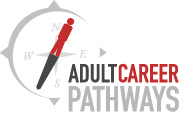This is an archived newsletter from ACP-SC and is available for archival purposes only. Hyperlinks on this page may be broken or may no longer link to the content specified from within the original posting date.
 Oregon’s
Oregon’sDepartment of Community Colleges and Workforce Development (CCWD) is partnering with community college Adult Basic Skills (ABS) programs on the Oregon Pathways for Adult Basic Skills Transition to Education and Work (OPABS) Initiative. The state is hoping to accelerate the process of building a pipeline of ABS learners who are prepared to enter postsecondary education, training programs, and jobs in high-demand career areas.
Essential for the OPABS initiative is the development of a basic skills system that includes the development of formal connections to postsecondary education, learner support services, and One-Stop Centers to facilitate ABS learners’ transition to further education and employment. Judy Alamprese of Abt Associates has been Oregon’s primary consultant in the development of this model. ABS programs are now testing enhancements to these services that promote learner engagement in courses, encourage learners to consider postsecondary education as a next step, and develop an individual course of study that can maximize educational attainment.
The OPABS initiative has developed accelerated basic skills courses in math, reading, and writing for cohort groups at Pre-Bridge and Bridge levels (High Intermediate ABE through High ASE) that incorporate applied occupational content from the state’s high-demand industries like Health, Industrial and Engineering Systems, and Business/
Three advising modules round out the OPABS resources to assist learners in understanding and completing college enrollment in postsecondary education.
More than half of the community colleges in Oregon are offering a version of OPABS in their ABS programs. Mt. Hood Community College (MHCC) in Gresham began implementation of OPABS in Fall 2010, with a Bridge Level cohort taught by Sue Byers and Donna Ball. The program was selected as the winner of the 2011 CCWD Noncredit-to-Credit Best Practices Award.
“Oregon recognizes that students taking Adult Basic Skills classes don’t always know what careers they’re interested in and aren’t always ready to commit to a specific track,” says Marc Goldberg, MHCC Dean of Adult Basic Skills and Workforce Development. This configuration of coursework and support services provides an avenue for students to explore different careers and college programs and develop their future educational and career plans.”
 The Designing Instruction for Career Pathways project team is pleased to announce the launch of the project`s website, the Adult Career Pathways Training and Support Center. We invite you to visit
The Designing Instruction for Career Pathways project team is pleased to announce the launch of the project`s website, the Adult Career Pathways Training and Support Center. We invite you to visit 


